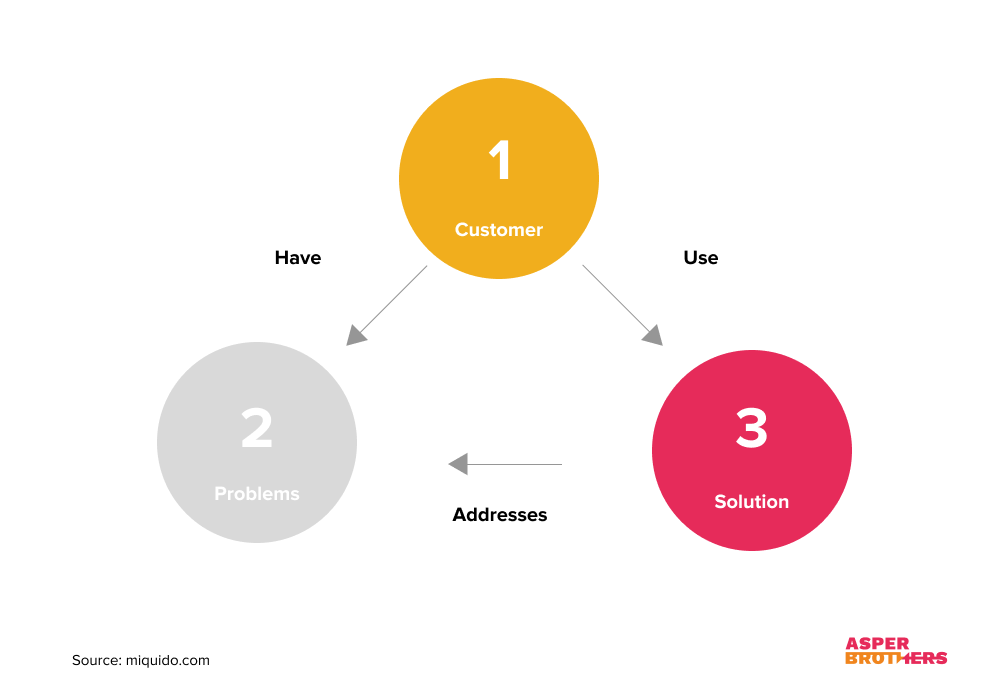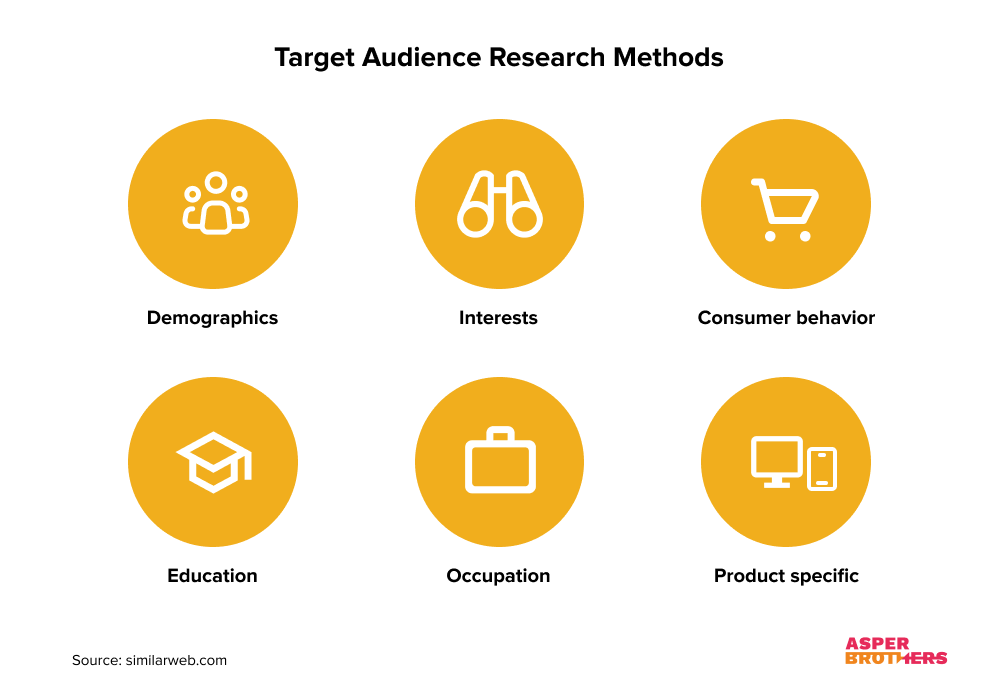Digital Transformation Services - Strategy & Framework for Company Transition
What is Digital Transformation? The term digital transformation often gets associated with buzzwords like AI, blockchain, cloud, and automatization. But what...

So what makes product strategy so essential? And what are the principal components of a digital product strategy? Let’s take a look at the fundamentals of a digital product strategy and tips for creating a digital product strategy in this article.
A digital product strategy describes how you will handle your product from conception to delivery. The concept goes beyond simply incorporating a feature into an overall product design throughout the entire product development cycle.
The core of your product’s value proposition is transformed by a digital product strategy, which also shapes the USP.
A solid product strategy indicates that your company has determined the value it wants to provide its users through software and other digital resources. It assists you in clearly outlining the value you will create, where to concentrate, why, and what it will take to attain that value. It is also the foundation for a product roadmap.
Any market presents challenges when launching a new product. A prominent example is the Harvard Business School research, according to which 95% of new products fail. Therefore, if you are interested in launching a digital product and getting the desired results, you should be prepared.
A strategic foundation provides clarity. Based on a recent report by productgym, developing a product strategy is a much-required skill across all industrial sectors.

The strategy should focus on solving customer problems.
The following are some reasons why product strategy is essential to any business:
A product strategy outlines every aspect of the whole digital product development process and offers a collective purpose. Understanding the context of product planning and management is essential to driving successful new initiatives.
Based on your company’s objectives, your product strategy may be directed by a single product or a group of products that join together to form a platform. The following are some advantages of envisioning the future of your product:
A carefully drafted product strategy offers a solid foundation for the whole product delivery process. You will have a reliable and robust roadmap to follow each step of the way, rather than switching between several strategies, relying on intuition, and altering your game plan every five minutes. This roadmap will determine how the product will evolve in the future.
Effective, market-driven strategies are crafted to produce results. From the start, they are designed to guarantee that you amaze your users, far exceed market needs (customer needs), and accomplish the precise objectives you established at inception.
According to a study by Wunderman, most consumers (63%) think that the best brands go above and beyond their customers’ expectations. However, a separate study found that only 19% of firms have a team of customer experience specialists focused on achieving this.
According to a survey of more than 500 product managers, 81% claim that product strategy is one of their duties. However, only 25% of these product managers said their companies had a clear strategy. A successful product strategy helps the team prioritize suitable projects and utilize time and resources more effectively.
Instead of working on everything at once, product owners, developers, marketers, and sales personnel can focus on the appropriate niches. Everyone will also be aware of how their particular task affects the process as a whole, enabling them to do their duties as efficiently as possible.
Product failure occurs when companies don’t have a well-devised strategy or a product strategy framework. You can avoid product failure by establishing your company’s objectives from the beginning and considering user preferences. A digital strategy will guarantee the security and efficiency of your products over the long term.
Data-driven product strategies are the most effective. They entail monitoring specific indicators that help you gauge your success and make it simple to identify problems so you can fix them.
At ASPER BROTHERS, we believe that a good strategy adapts to the changing business environment and company goals. When implementing digital products, we are not afraid to advise clients of changes and improvements that result from the discovery of new potential or areas that need to be included. In this way, when we release a product, it is up-to-date for the day of release, not the day the strategy was created. COO, ASPER BROTHERS Let's Talk
Your strategy essentially states your idea, goals, and the actions that need to be taken to achieve these goals. Many business owners don’t consider the necessity of a product strategy until after the product has been created. However, the optimal time to begin developing the digital product strategy is before the development process, so you have a reliable plan to follow at each stage.
The vision is the overarching, long-term objective that the firm or business unit strives to achieve and the driving force behind developing the product. It gives your team a sense of unity, serves as the true north star of the product, promotes alignment, and fosters productive teamwork. Additionally, it offers the knowledge of the critical outcomes necessary.
It is impossible to overstate the significance of the product vision. People need to understand the big picture objectives and how the product will contribute to accomplishing that vision. People want to know how their work, whether on the product team or in other company departments, will benefit the firm.
Numerous international studies have quantitatively shown that a startling 63% of employees do not comprehend the goals and motivations of their company. In other words, they don’t understand the company’s vision. Thus, a clearly stated product vision is crucial for individuals to understand what does not demand their time, energy, and limited resources.
The second essential component is the challenge you’re trying to solve, which gives background on what is necessary to achieve the long-term goal. You can begin distinguishing between symptomatic and fundamental causes once you have identified and gained a deeper understanding of the challenge.
This enables you to divide the bigger problem into more minor, more manageable, more precise, and doable problems that you will need to concentrate on resolving. The actual complexity of the task can be seen when you consider the difficulties and how they relate to one another. By breaking down a problem, you can also find critical insights influencing the product’s future success.
Analyzing why it matters to our customers is the next step in diagnosing the challenge. We must put ourselves in the position of our clients and users to understand the challenges and associated problems from their particular perspectives. One method of planning the best user experience can be UX Research.
By comprehending the challenge, you can start to specify the actual effort required to solve it and the criteria for a workable solution. The rich voice of the customer (VoC) data is provided via feedback tools, which can be used as the basis for successful product planning.
The impact of the challenges on the businesses and the audience must then be determined and understood. This makes it easier to define the current status of the company. Understanding the impact also enables you to use a single variable or a cumulative effect to emphasize qualitative and quantitative metrics to enhance the business cases.
The third component is the identification of the goal outcomes you are trying to attain by resolving the difficulties that make up the broader challenge. The achievable, short-term, measurable goal is outcomes. If successful, this will advance the company, provide value to the user, and support your long-term vision.
While the vision describes the overarching objective, the outcomes concentrate on the results of resolving issues in a systematic, measurable manner that advances the business.
Finally, this ensures that every team member is on the same page and provides a common definition of success. It enables the creation of benchmarks that will track the development of the targeted results and the vision.
About 70% of businesses consider their product strategy when making important choices. Additionally, they claim that their teams function more effectively as a result.
We must recognize the initial step and work towards achieving those results to develop that forward momentum. This frequently turns out to be very helpful in determining the best place to start.
Your actions define essential steps you will take as you find the right solution and determine what must be done to deal with the issue for customers in a practical, distinctive, and long-lasting manner.
According to the near-term outcomes you selected, they assist you in progressing from your current state and represent your product vision while aligning with the problems you have discovered (and will continue to discover).
Measurement is the fifth component of your product strategy. How will your company evaluate its development? What key performance indicators (KPIs) can you use to record, monitor, and measure the success of overcoming the difficulties you have identified as being of the utmost importance?
Your KPIs may emphasize quantitative or qualitative metrics essential to accomplishing your goals and the firm’s long-term success.
Success is defined by results, not by deliverables. The team should own some key performance metrics; therefore, you should concentrate on those. Frequently, business indicators like profit, timing, price, or Net Promoter Score will be used to measure progress.
Even if they are all worthwhile, they are all weak development indicators. Every example is a poor indicator. Rarely do these metrics come under the control of a product team, and they hardly ever offer chances for modification and change.
Any digital product’s launch and delivery require an excellent product strategy. It enables you to approach the entire process in a much more systematic, data-driven, and disciplined manner, increasing your odds of success in a surprisingly hard endeavor.
The following are the tips that would help create a successful product strategy:
Creating a clear product vision and precise, measurable goals should be the first step in developing a product strategy. Everything you plan and do should align with these overarching goals since they will guide the remainder of your approach.
Consider the precise objectives you have in mind. Goals may be corporate (such as how much you want to increase revenue), commercial (such as reaching a new age demographic), or consumer-focused (like smashing user satisfaction records).
You cannot develop a product without user research. Your product strategy should focus on who these users are, their concerns, and what they want. This process involves qualitative research like interviews, discussions, surveys, or focus groups. These concerns are the unfavorable feelings, undesired expenses, circumstances, and risks your clients are likely to or might encounter when using your product.
This approach also entails the extent to which your product would have an impact if it provided a solution. These discoveries will eventually be used to guide your design and development choices.
Today, brand perception is linked to the quality of digital service. IDG’s Digital Business Survey reveals that 91% of businesses intend to pursue a digital-first business strategy. The digital age necessitates a fundamentally different strategy.
According to an IDG study, 67% of companies consider enhancing customer service as their main objective in developing a digital business strategy.

There are many methods to effectively research a target audience. The appropriate techniques should be chosen according to the specifics of our business.
Using positioning, you can determine who your products and services will serve and where they will fit in the market. For this process, you must determine what special issues your solution addresses and how to explain these to potential buyers, contributing to company goals.
Understanding the positioning of your product will guide all aspects of your strategy, from the channels you choose to employ to the content you create and promote.
In your target market, it’s unlikely that your product will be the first of its kind. It’s critical to consider your competitors and your product’s competitive advantage. Will you be able to compete with them in a market where they might be well-established?
To offer your product the best chance of success, find out what they are doing well in strategy, make your team learn, and replicate it (when necessary).
The Razr2, Motorola’s next-generation cell phone, was scheduled to hit stores eight weeks after the release of Apple’s iPhone in June 2007. Motorola had eight weeks to reconsider its whole product strategy in light of Apple’s recent release.
Motorola’s executive team raised the following queries: Would the two items face off against each other? Should the Razr2 introduce additional features? What pricing model should we use?
A successful product strategy is an ongoing process. Data, user concerns, and the solutions you can provide are all subject to constant change. It must be continuously modified, from changing target audiences to escalating competition to new business needs.
To achieve business goals, maintain continuous communication with the stakeholders and ensure your existing products are updated and checked.
Any market presents challenges when launching a new product, so you should be prepared if you are planning to do so. It’s critical to consider your competitors and the unique features your product provides over those of the opposition. A digital product strategy shows that your company has decided what services it intends to offer customers through software and other digital resources. Many business owners don’t consider how necessary it is until after the product has been created.
A product strategy should specify who the customers are, their concerns, and what they want. Effective product strategies are crafted to create results and provide a solid foundation for the whole product delivery process. It must be continuously modified, from changing target audiences to escalating competition to new business prospects. It helps the team prioritize suitable projects and utilize time and resources more effectively.

What is Digital Transformation? The term digital transformation often gets associated with buzzwords like AI, blockchain, cloud, and automatization. But what...
In this post, we’ll take a close look at what to consider when companies look for offshore software development companies...
In this article, you will find about the staff augmentation model and how it can be helpful for your business. Also...